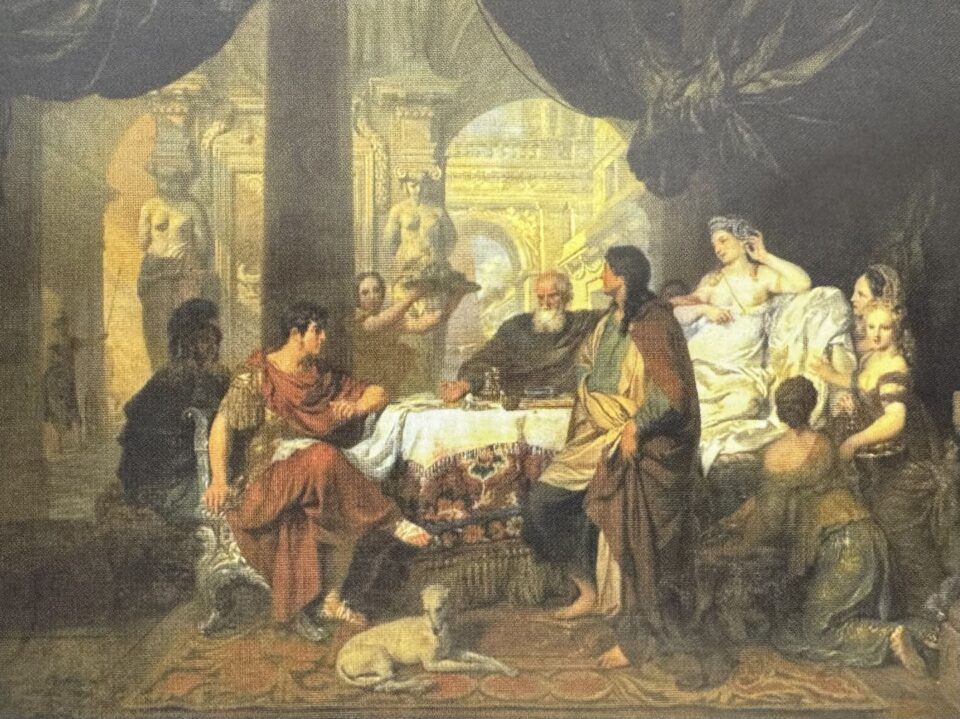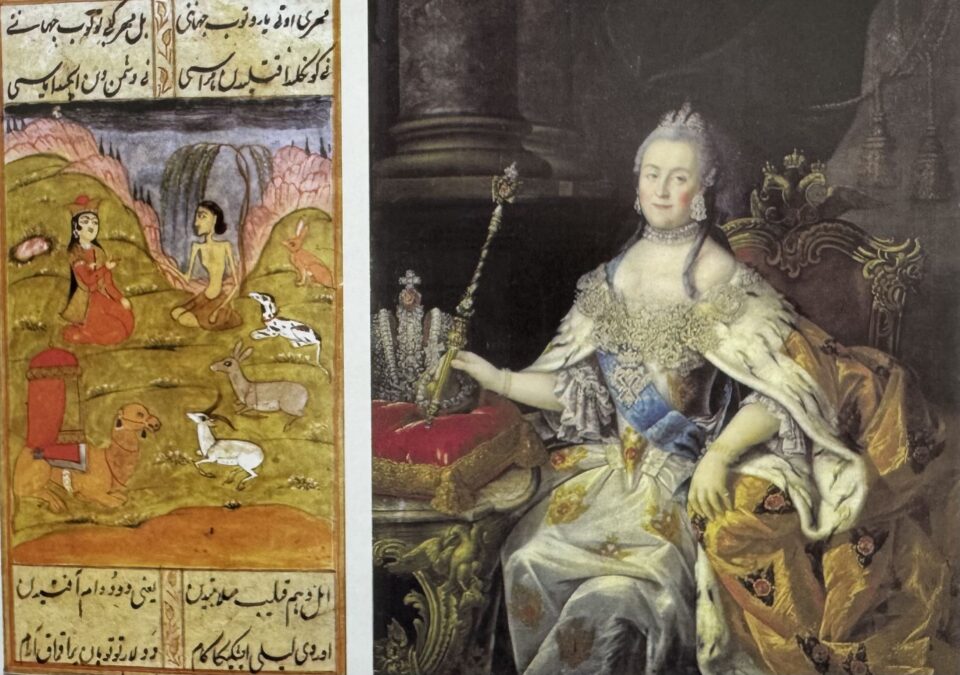The emerald’s romantic power dates back to ancient times. The Sikait-Zabara mines in Egypt supplied Rome, Byzantium and Babylon with emeralds until their depletion in the first century after Christ. The mines were worked for almost 3,000 years. Cleopatra, the irresistible Egyptian monarch, ordered her likeness carved on one of those emeralds before giving it to her lover, Julius Caesar. Even with the supply of emeralds from Mount Zabara, the strong demand for the green stone’s magical properties led to the use of uat, or green feldspar, throughout ancient Egypt.
After Caesar’s death, Cleopatra saw in Mark Anthony, the new ruler of an expanding empire, a stepping stone to further her own power. She adorned her ship with rose petals and sailed to meet him at Tarsus. She is said to have dressed as Aphrodite, the Greek goddess of love, on her first meeting with Mark Anthony. There is little doubt that another carved emerald bearing her likeness changed hands. Both emperors fathered children with Queen Cleopatra.

In time, the Romans depleted the last of the Egyptian mines. Within the Roman Empire, the Habachtal region of present-day Austria may have been a secondary source of emeralds, although green sapphires were a popular substitute in ancient Europe.
When emeralds from the New World began to be traded in the Far East, the Mughals and Nizams of India had sacred texts carved on the larger stones and used them as talismans. Other Islamic empires, the Ottoman Turks and the Safavid Persians, also cherished the green color of the emerald, whose power and symbolism made them highly prized. Mughal riches accumulated over the course of three centuries, yielding a dizzying wealth of gemstones, mainly emeralds and diamonds, that has never been equalled.
Only the Spaniards were immune to the romantic power of emeralds. During their conquest of the New World in the sixteenth century, they only sought gold. As Cortés, Pizarro and other conquistadors brought back South American emeralds from the New World in the early 1500s, the gems were traded for more gold. Cortés told the Aztecs of Mexico that he and his men “suffered from a disease of the heart which is only cured by gold.”
Hernán Cortés was described as ambitious, ruthless, quarrelsome and much given to women; all qualities that served him well in the conquest of Mexico. A historical account of the Spanish domination of Mexico notes that after Hernán Cortés’s return from his second voyage of conquest he took a young wite, the lovely Doña Juana de Zuñiga of Córdoba. Dressed in a necklace of five Aztec emeralds carved in fanciful shapes like fish, flowers and birds, Juana’s radiance was said to have sparked jealousy in Queen Isabella herself.
The romance of emeralds continues to ignite people’s imaginations more and more as sunken galleons of Spain’s treasure fleet are recovered by treasure hunters in the Caribbean. The impact is still being felt 30 years after the recovery of the Nuestra Señora de Atocha with her gold, silver, and 70 pounds of emeralds laying for centuries 55 feet below the water.
In Europe, royal treasures featuring emeralds abound, including the crowns of Lombard King Agilulf and Queen Theolinda from 600 A.D. The crowns are currently housed in the Vatican Museum in Rome. The Crown Jewels of England also contain many emeralds; Queen Mary’s grandmother, the Duchess of Cambridge, acquired 25 fabulous emerald drops ranging from 8 to 15 carats. Fifteen of the stones were adapted to a necklace, with the others used for pins and brooches.
Few writers have so accurately connected the threads of history and romance as the English gem trader and pearl expert Louis Kornitzer. In numerous books, he wrote on these subjects in an eloquent, personal style. The following excerpt is from The Jeweled Trail (1955):
The Lady Mary was an inveterate gossip. She could no more have avoided retelling a tidbit about a king, an emerald, and a plot, than fly. And there is something about emeralds which enriches even the page on which the name is written.

There is romance in every gem; but in some perhaps more than in others. To me the embodiment of mystery, glamour and all that is most beautiful in the realm of jewels is the emerald. It is the regal gem, emblem of princes and of power, conjuring up visions of the splendors of the Aztec emperors whose treasuries it enriched; of Cleopatra decking herself for Anthony with the finest stones from her great emerald quarries on the shores of the Red Sea; of the Doges of Medieval Venice and the stately ladies of the Russian Imperial Court. Its very name, in whatever language it is spoken, is sheer music… the Spanish esmeralda, the French emerande, the German smaragd, the Arab zummarud, are all variations on the same lovely theme.
My career includes several years as owner of a jewelry store in San Francisco that specialized in emeralds. At times, love struck men would enter my store with urgent, pleading requests for an emerald ring, pendant or necklace. It was immediately apparent that romance was involved. An emerald jewelry piece was needed as a gesture of romantic endearment or, in some cases, to smooth over a misstep! And it was always under a nearly impossible deadline that had me, the cutter and the goldsmith scurrying. Often the grateful customer would go off with the piece and I would never see the final outcome of all the frenzied effort. However, one man, a young entrepreneur from Silicon Valley, returned to visit me with his girlfriend, who was now his fiancée, and I had the pleasure of seeing the fruits of all this intense activity: a beautiful pair of dangling pear-shaped emeralds mounted with diamonds, framing a face that spoke of surrender and love. You could have hung a towel on the loving gaze that went between her eyes and his! It immediately brought to mind “the emerald gaze,” which Pablo Neruda wrote of in one of his poems:
When everything was high,
high,
there waited the cold emerald,
the emerald gaze…
Source: Ronald Ringsrud – Emeralds A Passionate Guide
